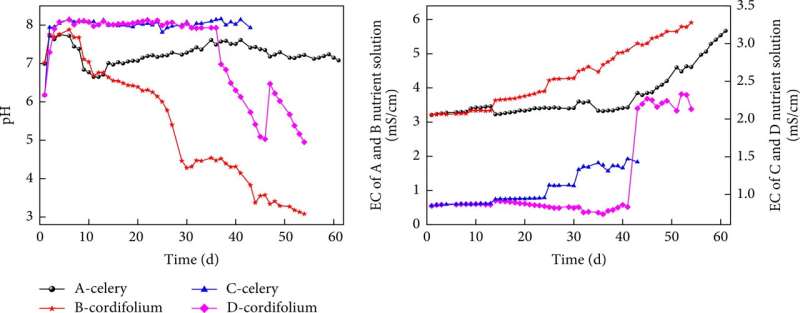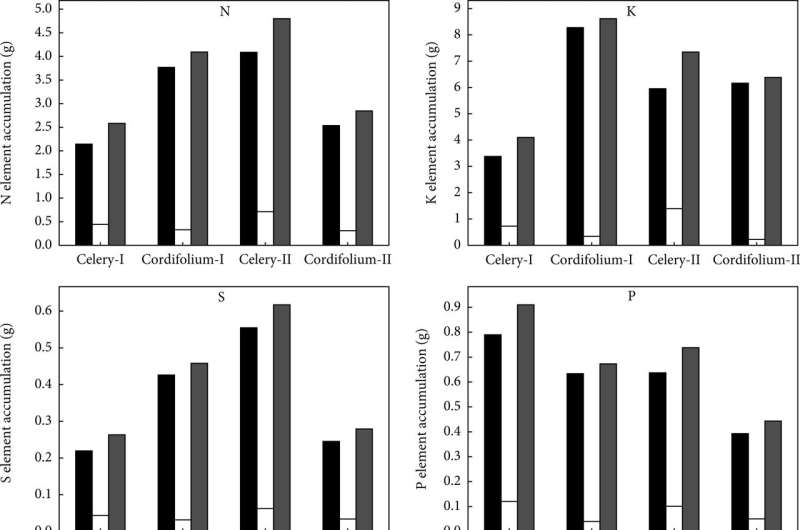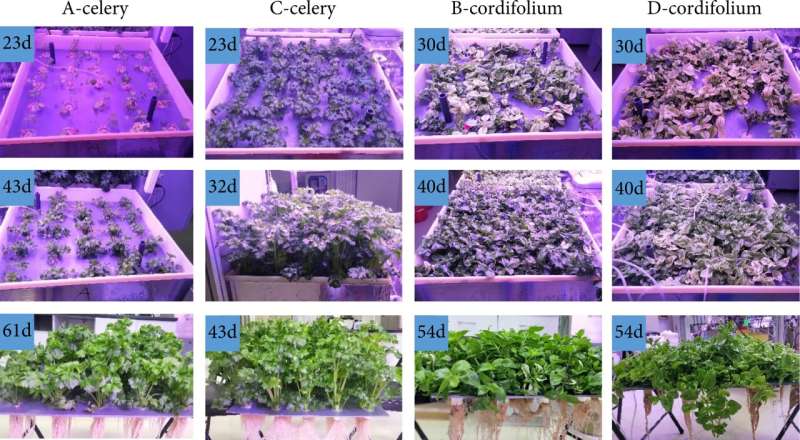In a research paper recently published in Space: Science & Technology, Liangchang Zhang verified the feasibility of reusing treated wastewater (including sanitary wastewater and urine wastewater) as a plant hydroponic medium.
Two hydroponic media were used for hydroponic cultivation. One was the reused medium prepared by recovery domestic wastewater from CELSS, and the other was the standard plant nutrient solution Hoagland nutrient solution. The reused medium had higher concentration of nitrogen (N) and potassium (K) and roughly equal magnesium (Mg) and sulfur (S) concentration.

Two kinds of crops, apium graveolens Linn (celery) and mesembryanthemum cordifolium L.F. (cordifolium) were selected in this study, which showed good salt tolerance in previous research. Celery was cultivated in box A and C, while cordifolium was planted in box B and D. For box A and B, the plants were cultivated with reused medium, and for box C and D, Hoagland nutrient solution was used.
The celery cultivated in reused medium exhibited severe yellowing and wilting in the first 23 days; a concentrated liquor of micronutrient elements was added into the circulation tank of the corresponding cultivation box on the 24th day to promote microelement concentration to the same level of Hoagland medium. Then, the celery sprouted new green shoots on the 32nd day, and the appearance restored completely on the 43rd day.
Like the celery, the cordifolium grown in reused medium showed a microelement shortage symptom. Many leaves turned to gloomy yellow green, and the cordifolium appearance return normal after supplementation with the concentrated micronutrient liquor.
Over the whole growth periods, the celery and the cordifolium could be cultivated using the recovery wastewater with micronutrient elements replenishment. Furthermore, the cordifolium cultivated in reused medium showed better performance than that in standard Hoagland nutrient solution.

The pH of the reused medium, both for celery and cordifolium, was lower than Hoagland nutrient solution, due to the relatively lower initial pH in the recovery wastewater; on the other hand, there are relatively higher concentrations of mineral elements (K, Na) in the recovery wastewater, and the crops absorbed a large number of cations and released H+ , thereby reducing the nutrient solution pH.
For both crops, the reused medium had a faster increase in electrical conductivity than Hoagland nutrient solution, which indicated that the plants transpiration cultured with recovery wastewater was stronger than that of plants cultured with Hoagland nutrient solution.
More information: Liangchang Zhang et al, The Feasibility Research on Reusing High Salinity Wastewater as a Plant Nutrient Medium for Plant Hydroponics in CELSS, Space: Science & Technology (2022). DOI: 10.34133/2022/9853421
Provided by Beijing Institute of Technology Press Co., Ltd



